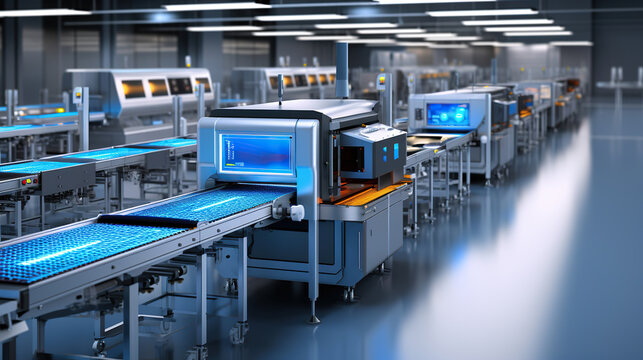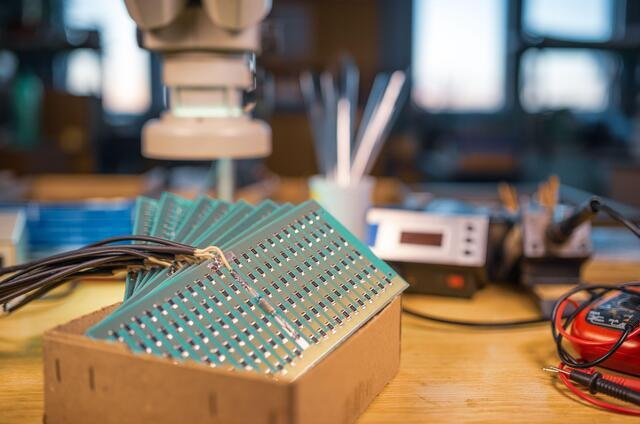Content Menu
● Introduction
● Understanding First-Line SMT
● Key Challenges in Implementing First-Line SMT
>> Challenge 1: Quality Control
>> Challenge 2: Process Optimization
>> Challenge 3: Equipment and Technology
>> Challenge 4: Skilled Workforce
>> Challenge 5: Cost Management
● Solutions and Best Practices
● Conclusion
● FAQ
>> 1. What is first-line SMT?
>> 2. Why is quality control a challenge in first-line SMT?
>> 3. How can process optimization improve first-line SMT?
>> 4. What role does technology play in first-line SMT?
>> 5. How can companies manage costs in first-line SMT?
● Citations:
Introduction
First-line Surface Mount Technology (SMT) is a cornerstone of modern electronics manufacturing, enabling the efficient assembly of printed circuit boards (PCBs). This technology allows for the placement of components directly onto the surface of PCBs, which is crucial for miniaturization and high-density designs. However, implementing first-line SMT presents several challenges that manufacturers must navigate to ensure quality and efficiency. This article explores these challenges in detail and offers insights into best practices for overcoming them.

Understanding First-Line SMT
First-line SMT involves the initial stage of the SMT process, where components are mounted onto PCBs using automated machinery. This stage is critical as it sets the tone for the entire manufacturing process, impacting yield, quality, and efficiency. The complexity of modern electronic devices necessitates a robust understanding of SMT processes to mitigate potential issues that can arise during production.
Key Challenges in Implementing First-Line SMT
Challenge 1: Quality Control
Quality control is a significant challenge in first-line SMT. Defects such as solder bridging, tombstoning, and insufficient solder joints can lead to malfunctioning products and increased costs. Automated inspection systems like Automated Optical Inspection (AOI) are essential for maintaining quality but require proper calibration and expertise to function effectively. The pressure to quickly inspect components while ensuring accuracy often leads to errors that can compromise product quality.
- Solder Bridging: This occurs when excess solder creates unintended connections between adjacent pads, leading to electrical shorts. It often results from misalignment during the solder paste application or improper reflow profiles.
- Tombstoning: A phenomenon where one end of a component lifts off the PCB during soldering, typically caused by uneven heating or improper solder paste application.
- Insufficient Solder Joints: These can result from inadequate solder paste application or component lead coplanarity issues, leading to unreliable electrical connections.
To combat these defects, manufacturers must implement rigorous inspection protocols and invest in advanced inspection technologies.
Challenge 2: Process Optimization
Optimizing SMT processes involves fine-tuning parameters such as solder paste application, reflow profiles, and pick-and-place accuracy. Even minor deviations can result in defects, making continuous monitoring and adjustment crucial. The complexity of these processes increases with the introduction of new materials and components, necessitating ongoing training and adaptation.
- Solder Paste Application: The initial step in SMT assembly is critical for ensuring reliable solder joints. Proper alignment between the stencil and PCB is essential; misalignment can lead to defects like insufficient solder or bridging.
- Reflow Profiling: Developing an optimal reflow profile tailored to specific solder paste and components is crucial. Each stage—preheat, soak, reflow, and cooling—must be carefully managed to avoid common defects.
Challenge 3: Equipment and Technology
Advanced machinery and technology are integral to first-line SMT. However, the high cost of equipment and the need for regular maintenance pose challenges. Additionally, integrating new technologies like AI for process control requires significant investment and expertise. Many manufacturers struggle with outdated equipment that cannot keep pace with evolving industry standards.
- Investment Costs: High-quality SMT equipment such as pick-and-place machines, reflow ovens, and inspection systems require substantial financial investment. Moreover, ongoing maintenance costs can strain budgets.
- Integration of New Technologies: As technology evolves rapidly, manufacturers must adapt their processes to incorporate new advancements without disrupting existing workflows.
Challenge 4: Skilled Workforce
A skilled workforce is essential for managing and troubleshooting SMT processes. The shortage of trained personnel can lead to inefficiencies and increased downtime, emphasizing the need for comprehensive training programs. As technology evolves, continuous education becomes crucial to ensure that employees can effectively operate sophisticated machinery.
- Training Programs: Manufacturers must invest in training programs that equip employees with the necessary skills to operate advanced SMT equipment effectively.
- Retention of Skilled Workers: Retaining skilled workers is vital for maintaining production efficiency. Companies must create an environment that fosters growth and development to keep talent engaged.

Challenge 5: Cost Management
Balancing costs while maintaining quality and efficiency is a constant challenge. Manufacturers must invest in technology, training, and quality control without exceeding budget constraints. This often leads to difficult decisions about resource allocation that can impact overall productivity.
- Lean Manufacturing Principles: Implementing lean manufacturing practices can help reduce waste while maintaining high-quality standards. Streamlining processes can lead to significant cost savings over time.
- Budget Constraints: Manufacturers must carefully allocate resources to ensure that investments in technology do not compromise other critical areas of production.
Solutions and Best Practices
To overcome these challenges, manufacturers can adopt several strategies:
- Implementing Automated Inspection Systems: Enhancing quality control through automated systems reduces human error and increases inspection speed. Automated First Article Inspection (FAI) systems ensure that all parts are inspected before mass production begins.
- Using AI and Data Analytics: Leveraging AI for process optimization enables predictive maintenance and helps identify potential issues before they become critical problems.
- Investing in Employee Training Programs: Building a skilled workforce through ongoing training ensures that employees are equipped to handle complex SMT processes effectively.
- Regular Maintenance and Upgrades: Ensuring equipment reliability through regular maintenance minimizes downtime and enhances production efficiency.
- Adopting Cost-Effective Practices: Implementing lean manufacturing principles can help reduce waste while maintaining high-quality standards.
Conclusion
Implementing first-line SMT is a complex yet rewarding endeavor. By addressing challenges such as quality control, process optimization, equipment investment, workforce skills, and cost management, manufacturers can achieve high efficiency and product reliability. The integration of advanced technologies alongside a well-trained workforce further enhances the potential for success in SMT processes. As the demand for smaller, more complex electronic devices continues to grow, overcoming these challenges will be essential for manufacturers aiming to remain competitive in the fast-paced electronics market.

FAQ
1. What is first-line SMT?
First-line SMT refers to the initial stage of surface mount technology processes in manufacturing where components are mounted onto PCBs using automated machinery.
2. Why is quality control a challenge in first-line SMT?
Quality control is challenging due to the complexity of inspecting components accurately while maintaining production speed; defects can lead to significant rework costs.
3. How can process optimization improve first-line SMT?
Process optimization enhances efficiency by reducing defects through careful management of solder paste application, reflow profiles, and component placement accuracy.
4. What role does technology play in first-line SMT?
Advanced technology is crucial for precision in manufacturing but requires significant investment; integrating new technologies can improve overall productivity if managed correctly.
5. How can companies manage costs in first-line SMT?
Cost management involves balancing investments in technology with operational efficiencies; adopting lean manufacturing principles helps reduce waste while maintaining quality standards.
Citations:
[1] https://iconnect007.com/index.php/article/45468/first-article-inspection-understanding-the-problems/45471?skin=smt
[2] https://www.rayprasad.com/three-steps-to-improve-smt-yield
[3] https://www.smtfactory.com/Essential-Steps-for-SMT-Production-Line-Setup-id49117676.html
[4] https://jhdpcb.com/blog/efficient-smt-assembly/
[5] https://rework.co.uk/blog/in-depth-guide-to-surface-mount-technology/
[6] https://www.teamsmt.com/solutions/
[7] http://homepage.divms.uiowa.edu/~ajreynol/arcade17.pdf
[8] https://asselems.com/en/best-practices-in-smt-assembly
[9] https://blog.matric.com/smt-production-for-pcbs-matric
[10] https://www.wevolver.com/article/smt-process




















